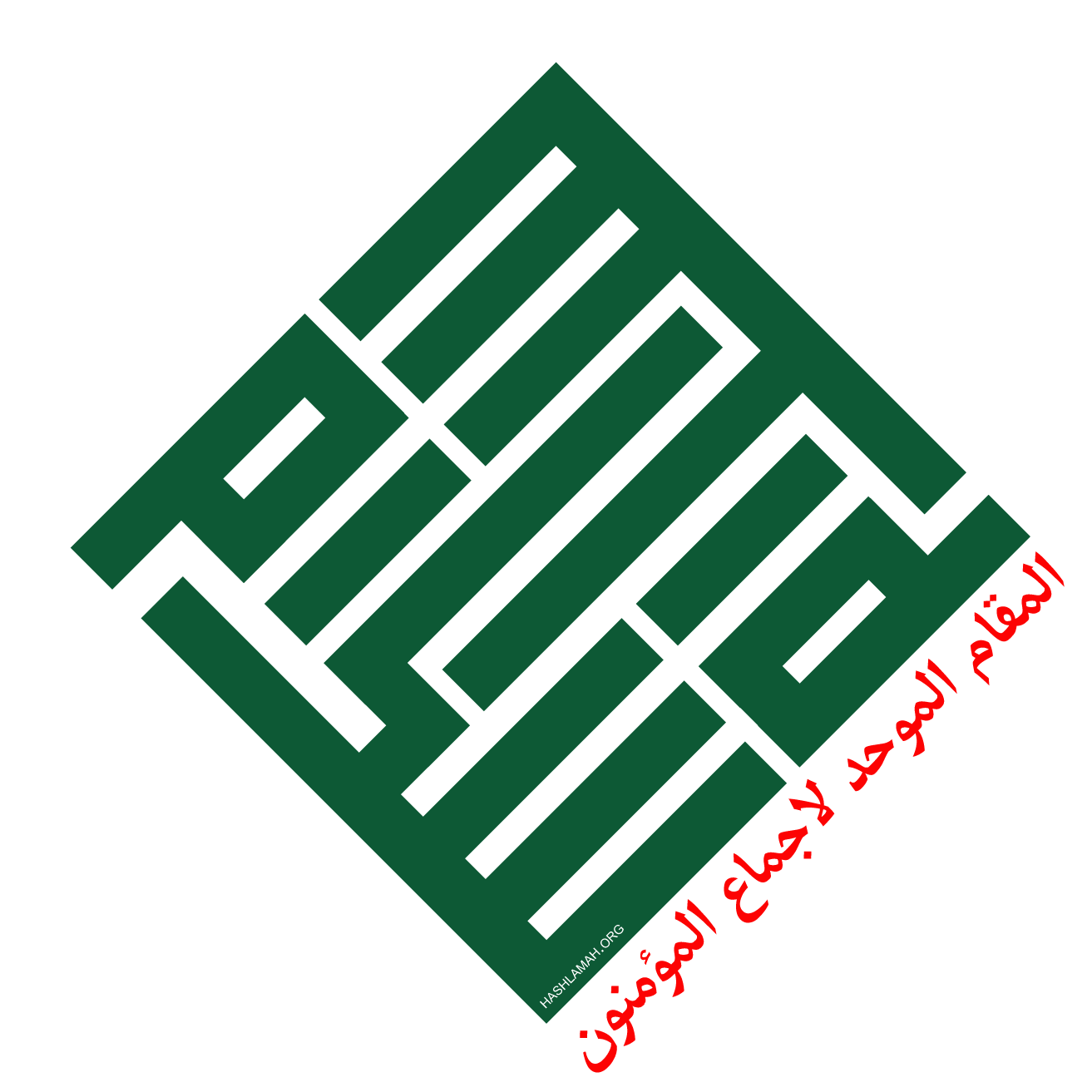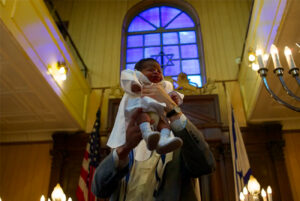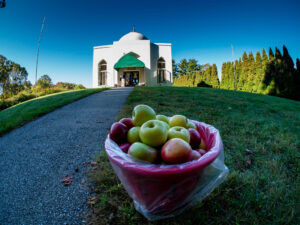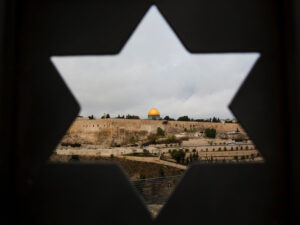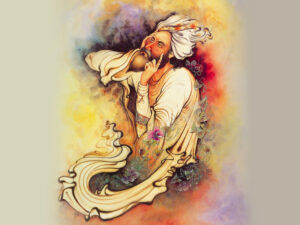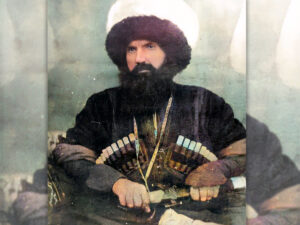בְּשֵׁם יְהוָה, אֵל עוֹלָם (In the Name of the LORD, the Everlasting God…) Sefer Ha’Berashit (Genesis) 21.33
In the wake of millennia of religious conflict, infighting – as well as fighting and conquering perceived external enemies – many laudable attempts at peacemaking have emerged which seek to unite believers in a variety of different faiths. To be sure, there are numerous religious communities which hold to such universalistic ideals: Sikhism, Baha`ism, Buddhism, Taoism, and indeed most expressions of Judaism, as well as authentic forms of Sufism hold to the notion that we can all coexist and even come together at times in a shared space for worship and to embrace our similarities rather than our differences. Unfortunately, the problems facing certain faith communities are more deeply rooted than this solution is prepared to handle.
Our approach, while well-known and not in the least bit of dispute halakhically, is quite surprise to those who might not have been aware of the historically favorable view of Islam and Muslims. Even more than his father, Avraham ben Rambam went even further to say: “You are aware of the ways of the ancient saints of Israel, which are not of but little practise among our contemporaries, that have now become the practice of the Ṣūfīs of Islām, on account of the iniquities of Israel.”[1]
But far from suggesting that Jews synthesize Islamic practice with Judaism, Avraham ben Rambam makes it clear that Islam was bringing Jewish practice to the nations, not the nations bringing `avodah zarah to Jews: “Do not regard as unseemly our comparison of that to the behaviour of the Sufis, for the latter imitate the prophets and walk in their footsteps, not the prophets in theirs.”[2]
As the Nagid, the head of Egyptian Jewry, Avraham ben Rambam put these words into practice by returning the Jewish community to prayer prostrations or “Selah” that Muslims had adopted from ancient Jewish practice. The Qur’an, of course, makes it clear that there is nothing new it was bringing (41.43; 42.13; 46.9; 46.10, et al.); but instead that it was a “reminder” (15.6; 15:10; 36:10) to people familiar with Biblical stories, of the Torah that was with them, “between your hands” (e.g. 5.43); and that every Islamic practice was in fact a practice of the Biblical prophets that had come before. It is clear that Rabbeinu Avraham ben Rambam’s words were not only authoritative from a Jewish perspective, but were also consistent with what the Qur’an says about itself.
By the time of the Rambam’s grandsons, David and `Ovadyah, and indeed throughout many generations to follow, both the works of the Maimonidean dynasty as well as letters found in the Cairo Genizah caché (discovered in 1896) make it clear that Jews and Sufi Muslims were engaged in co-worship, shared meditation retreats, zhikr (Heb: hazkarah
Interfaith communities, as they have incarnated thus far, are usually of one of two sorts. One type will merely ask all faiths to coexist and not engage painful histories, or issues of theological contention. The other will simply amalgamate two or more faiths into a sort of hybrid religion. It should be stated from the outset that this is not what the Hashlamah Project, nor the Judeo-Sufis of the Medieval era were engaged in.
One of the earliest and best documented historical precedences for the Hashlamah Project Study Circles is even older than the Medieval Judeo-Sufi Rabbis. During the Second Temple Era, there was a huge movement of Jewish converts in the Roman Empire. This was so widespread, that the term “proselyting” comes from the Greek term for one being made a Jew through conversion. A staggering 10% of the Roman Empire had in fact converted to the popular Jewish religion. Dio Cassius writes in the second century CE, confirming as a third party what the Jewish sources said on this matter, that term “Jew” is not one genos of people, but instead “applies to all men even of different races who follow the laws of the Jews.”[3]
Judaism both intrigued the Roman imagination, and offered a far cheaper alternative to the trendy mystery cults of Isis and Mithras worship. But Judaism required a full convert to be circumcised, and as it was rare for non-Jews in the Roman world to be circumcised in infancy, this was a painfully difficult step for the adult convert to take. Therefore, because many Roman non-Jews enjoyed the guidance and teachings of the Torah but did not fully-convert, archeological evidence indicates from synagogue donor lists,[4] that an even larger number were synagogue attendees and partial members known as “Theosebes” or “God Fearers” who nevertheless did not take the final step to conversion, even while observing some parts of the Torah.[5]
This mass-movement did not die off with the destruction of the Temple. The Christian founder Paul saw in the Theosebes fertile recruiting ground for Christianity, and indeed, the nearly over-night success of the religion was owed to his courting of Theosebes. The Qur’an too makes reference to such individuals by the name “Muslim.” Indeed, while Jews are “God Fearers” and this term applies to Jews as well as a type of non-Jews, the term “Muslim” applied Qur’anically both to Believers (“Mu’minin” in Arabic, or “Maminim” in Hebrew), and those who the Qur’an admonishes to only call themselves Muslims because they have not yet risen to the level of “Iman” or “Belief” (49.14). For this reason, Rabbeinu Bachya ibn Paqudah explains, in the 11th century, that truly pietistic Judaism is not simply “islam” or “submitting to God” it is complete “surrender without resistance to God” (istislam).
The Theosebes model was not restricted to the Second Temple Era. Indeed, we see that many of these donor lists continued to reflect such numbers for centuries to come, even after the destruction of the Temple. So too do we see this model in Muhammad’s day. In Medinah, a place termed by the Hebrew word for “State,” Muhammad was invited to lead the community that the late-preservation of the Constitution of Medinah (Safihat al-Madinah) describes as “One Ummah” (Ummatan Wahidatan). Throughout the Qur’an, the term “Ummah” – a Hebrew word for “Nation” – is used exclusively for a “religious community,” in contrast to people divided by different kinds of faith.” One such example from the Qur’an is Sūrah 23.52, which is translated by Shakir and Pickthal as meaning nothing short of “One Religion.” The Yusuf Ali version takes more creative license, rendering it “a single Brotherhood.”
It was clear that Jews and “Muslims” of both the grade “muslim” and “mu’min” were viewed as part of “One Religious Community” in Medinah, even while not all were Jews. Perhaps this is indeed why Jews in the Levant and Andalusia immediately allied themselves with the immigrating Muslim forces who came to fight the Christians who had been subjugating them. Perhaps this is why the earliest Jewish references to Muhammad’s followers are entirely positive, make no disparaging references to Muhammad (even while disparaging the Ishma`elites before him), call his companion Omar a “lover of Israel” and refer to the Ishma`elite immigrants as “a God send.”[6] These Levantine Jews, and their Muslims who they met, had never heard of the stories of Jew-hatred and tribal genocide which Ibn Ishaq (d. 767, or 761)[7] concocted as political polemic, following the Issuniyah uprising against the repression and oppression of the Abbasid Caliphate (750–1258 C.E.). These late stories – penned a century and a half after Muhammad – were described by Imam Malik ibn Anas (c. 711 – 795), of the Maliki mazhhab as “bizarre,” and as written by a man who was “the greatest of impostors” (dajjal min dajajilah) according to Imam Malik.
Whether in the Second Temple Era with Jews and Theosebes praying and congregating together, or in Medinah with Jews and Muslims engaged as “One Religious Community” we see that the Torah’s respect for “Gerei Toshav” or “Yirei Ha’Shamayim” continued to be expressed and extended towards non-Jewish worshipers of the God of the Torah.
What we are doing at the Hashlamah Project Study Circles is not simply an “interfaith community,” nor is it a hybridization of Judaism and Islam, it is an ANCIENT framework for Jewish and Muslim co-existence and co-worship that is based off of a model that has proven for centuries to work when put into practice. We do not need to reinvent the proverbial wheel. The way to build it has already been outlined in the Torah. All we must do is put it back into practice and reestablish communities on small scales – like the Judeo-Sufi communities of Rabbeinu Bachya ibn Paquda, Rabbi Natanyel ibn al-Fayyumi, and indeed all of the Maimonidean dynasty – which show that peace is possible. We must not allow the failures of those who have broken from this model, followed by Jewish communities historically, to depress us into cynicism. Pessimism is the enemy of opportunity. Peace is not something that is established at the end of a “process,” peace is the process. Let’s start today.
If you would like to get involved, contact us at the following address, and find out if there is a Hashlamah Chapter in your city!
The Hashlamah Project and Hash
P.O. Box 622
Yellow Springs, OH 45387
If you would like to learn more about a historical understanding of “Islam” in the time of Muhammad, read the Masters thesis by the author of this piece. It is available from the following links, or by contacting the author directly at www.MicahNaziri.com
